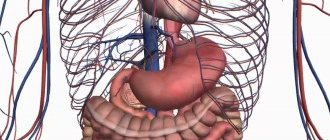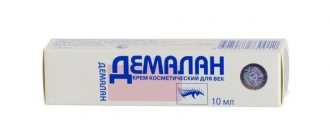Bioracef tablets p/o 500 mg No. 5x2
Name
Bioracef tab. p/o 500 mg per bl. in pack №5x2
Main active ingredient
Cefuroxime
Release form
Pills
Dosage
500mg
pharmachologic effect
The active ingredient of Bioracef is cefuroxime axetil. This is a prodrug from the group of cephalosporins, from which the antibiotic cefuroxime is released in the intestines and blood. Bioracef has a bactericidal effect on various pathogenic microorganisms that cause infections. Resistant to the action of most β-lactamases, it is active against a wide range of gram-positive and gram-negative microorganisms.
Pharmacodynamics
Mechanism of action Cefuroxime axetil is hydrolyzed by esterase enzymes into the active antibiotic cefuroxime. Cefuroxime blocks the synthesis of bacterial cell walls by binding to penicillin-binding proteins. The process of cell wall biosynthesis is interrupted, which leads to damage to the bacterial cell and its death. Cefuroxime Axetil Limit Values The minimum inhibitory concentration (MIC) limits presented below were determined by the European Committee on Antimicrobial Susceptibility Testing (EUCAST). Microorganism - Limit concentrations (mg/l) - H - In Enterobacteriaceae 1.2 - ?8 - >8 Staphylococcus spp. — -3 — _-3 Streptococcus A, B, C and G — -4 — -4 Streptococcus pneumoniae — ?0.25 — >0.5 Moraxella catarrhalis — ?0.125 — >4 Haemophilus influenzae — ?0.125 — >1 Limit concentrations not related to species1 - IE5 - IE5 1The maximum concentrations of cephalosporins for Enterobacteriacae take into account all clinically significant mechanisms of resistance (including those mediated by ESBL and plasmid ATP). Using the above criteria, some beta-lactamase-producing strains can be considered sensitive or moderately sensitive to third- and fourth-generation cephalosporins and should be designated as such, whether they contain ESBL or not. In many regions, detection and identification of ESBL for the purpose of effective treatment of infections is advisory or mandatory. 2Uncomplicated urinary tract infections (cystitis) only. 3The sensitivity of staphylococci to cephalosporins is judged by sensitivity to methicillin; exceptions include ceftazidime, cefixime and ceftibuten, which have no established limit values and should not be used for staphylococcal infections. 4The sensitivity of beta-hemolytic streptococci of groups A, B, C and G to beta-lactam antibiotics is judged by sensitivity to penicillin. 5There is insufficient evidence that the bacterial species is a suitable target for treatment with the drug described. MIC may be stated with comment, but without simultaneous assignment to group C or V. R = sensitive, R = resistant Microbiological sensitivity The frequency of acquired resistance of selected species may vary depending on geographic location and time. Collection of regional information related to resistance, especially in the treatment of severe infections, is indicated. If necessary, specialist advice should be sought, especially when the local incidence of resistance is such that the appropriateness of the use of cefuroxime axetil is questionable, at least for some types of infections. In vitro, cefuroxime generally acts against the following microorganisms. Species usually susceptible Aerobic gram-positive bacteriaStaphylococcus aureus (methicillin sensitive)*Streptococcus pyogenesStreptococcus agalactiae Aerobic gram-negative bacteriaHaemophilus influenzaeHaemophilus parainfluenzaeMoraxella catarrhalis SpirochetesBorrelia burgdorferi Microorganisms among which acquired resistance may be a problem Aer common gram-positive bacteriaStreptococcus pneumoniae Aerobic gram-negative bacteriaCitrobacter freundiiEnterobacter aerogenesEnterobacter cloacaeEscherichia coliKlebsiella pneumoniaeProteus mirabilisProteus spp. (other than P. vulgaris) Providencia spp. Anaerobic gram-positive bacteria Peptostreptococcus spp. Propionibacterium spp. Anaerobic gram-negative bacteria Fusobacterium spp. Bacteroides spp. Microorganisms with natural resistance Aerobic gram-positive bacteriaEnterococcus faecalisEnterococcus faecium Aerobic gram-negative bacteriaAcinetobacter spp. Campylobacter spp. Morganella morganii Proteus vulgaris Pseudomonas aeruginosa Serratia marcescens Anaerobic gram-negative bacteria Bacteroides fragilis Other Chlamydia spp. Mycoplasma spp. Legionella spp. * All S. aureus resistant to methicillin are also resistant to cefuroxime.
Pharmacokinetics
Absorption After oral administration of cefuroxime, axetil is absorbed from the gastrointestinal tract and is rapidly hydrolyzed in the intestinal mucosa and in the blood, resulting in free cefuroxime entering the circulation. Absorption of the drug occurs optimally if it is taken soon after a meal. The rate of absorption of cefuroxime from suspension is lower compared to tablets, which leads to a later achievement of a lower maximum serum concentration and to a decrease in bioavailability (by 4-17%). Cefuroxime axetil oral suspension was not bioequivalent to cefuroxime axetil tablets during the study in healthy adults and should not be substituted by simply converting milligrams to milligrams. The pharmacokinetics of cefuroxime is linear over the entire dosage range when administered orally: from 125 mg to 1000 mg. With repeated oral doses of 250 to 500 mg, dose accumulation did not occur. Distribution Protein binding ranges from 33 to 50%, depending on the technique used. Following a single dose of cefuroxime axetil 500 mg tablets in 12 healthy volunteers, the apparent volume of distribution was (CV%=28%). Concentrations of cefuroxime exceeding the minimum inhibitory concentrations for ubiquitous bacteria can be achieved in the tonsils, sinus tissue, bronchial mucosa, bones, pleural fluid, joint fluid, joint lubrication, abdominal fluid, bile, sputum, and vitreous. In case of inflammation of the meninges, cefuroxime penetrates the blood-brain barrier. Metabolism Cefuroxime is not metabolized. Elimination The serum half-life is 1-1.5 hours. Cefuroxime is excreted from the body as a result of the processes of glomerular filtration and tubular secretion. Renal clearance is 125-148 ml/min/1.73 m2.
Indications for use
The tablets are intended for the treatment of mild to moderate infections caused by bacteria sensitive to cefuroxime in adults and children over 5 years of age. Acute streptococcal pharyngitis and tonsillitis Acute bacterial inflammation of the paranasal sinuses Acute otitis media Exacerbation of chronic bronchitis Cystitis Pyelonephritis Uncomplicated skin and soft tissue infections Treatment of the early stage of Lyme disease (borreliosis) It is necessary to take into account official recommendations regarding the correct use of antibacterial drugs. Cefuroxime axetil is effective as continuation therapy after treatment with parenteral cefuroxime sodium in the treatment of pneumonia and exacerbations of chronic bronchitis.
Directions for use and doses
Bioracef should always be taken as recommended by your doctor. If you have any additional questions, consult your doctor or pharmacist. Dosage Treatment usually lasts 7 days (can last from 5 to 10 days), unless otherwise prescribed by your doctor. Adults, including the elderly, and children over 5 years of age (body weight >40 kg) Indications for use - Dosage Acute tonsillitis, acute sinusitis - 250 mg twice a day Acute otitis media - 500 mg twice a day Exacerbation of chronic bronchitis - 500 mg twice daily Cystitis - 250 mg twice daily Pyelonephritis - 250 mg twice daily Uncomplicated skin and soft tissue infections - 250 mg twice daily Lyme disease - 500 mg twice daily for 14 days within 10-21 days) Children from 5 years (body weight 30 ml/min/1.73 m2 - 1.4-2.4 - no need for dose adjustment (typical dose 125-500 mg, taken twice a day) 10 -29 ml/min/1.73 m2 - 4.6 - typical dose taken once a day for 3 months) and in children the pharmacokinetics of cefuroxime are the same as in adults. There are no clinical trial data regarding the use of cefuroxime axetil in children under 3 months of age. Bioracef tablets cannot be crushed, so in children who cannot swallow a tablet, the drug should be used in the form of a suspension available on the market. Method of administration The tablets should be taken orally after meals with a small amount of water. The tablets should not be broken or crushed due to their bitter taste. Depending on the disease and how the patient responds to treatment, the starting dose may vary or more than one course of treatment may be required.
Use during pregnancy and lactation
Before using any medicine, consult your doctor or pharmacist. The drug can be used during pregnancy only if absolutely necessary. Nursing mothers should not use the drug unless it is absolutely necessary (cefuroxime passes into breast milk).
The ability to influence the reaction rate when driving a vehicle or working with other mechanisms
Bioracef may cause dizziness; caution must be exercised when driving or servicing moving machinery.
Precautionary measures
Before you start using Bioracef, you should discuss this with your doctor or pharmacist. Particular caution should be exercised when using Bioracef tablets in patients with hypersensitivity to other drugs, especially penicillin, because they may experience an allergic reaction. Particular caution should be exercised in patients who experience anaphylactic shock after using penicillin. If symptoms of severe hypersensitivity reactions occur: shortness of breath, swelling of the face and neck, blistering rash, redness and itching of the skin, treatment with cefuroxime should be stopped immediately and you should consult a doctor. Film-coated tablets should not be crushed and are therefore not suitable for use in patients who are unable to swallow tablets whole. The use of Bioracef may cause mycosis, especially in elderly patients. Very rarely, during treatment, pseudomembranous colitis may occur as a result of excessive growth of Clostridium difficile bacteria that are resistant to the drug. If diarrhea occurs during the use of an antibiotic or shortly after stopping treatment, the possibility of this complication should be considered. In mild cases, it is enough to stop taking the drug; in severe cases, the doctor will prescribe metronidazole (orally) or, possibly, vancomycin. You should not take drugs that suppress intestinal motility or other drugs that cause constipation. At the beginning of treatment for Lyme borreliosis with cefuroxime axetil, worsening of the symptoms of the disease, fever, weakness, headache, and malaise may occur. This reaction is called the Jarisch-Herxheimer reaction. It occurs as a result of the action of cefuroxime axetil on the pathogenic microorganism that causes the disease. This is a common and self-limiting reaction to antibiotic therapy for borreliosis. If in doubt, consult your healthcare provider. During sequential therapy, the need to change the antibiotic to an oral form depends on the severity of the infection, the clinical condition of the patient, and the sensitivity of the pathogen. Such a change is possible only if there is a clear improvement in the patient's clinical condition. If there is no clinical improvement within 72 hours of parenteral treatment, you should contact your doctor, who should reconsider the treatment. Serum concentrations of cefuroxime decrease after dialysis.
Interaction with other drugs
Tell your doctor or pharmacist about all medications you are currently taking or have recently taken, including those given without a prescription. Medicines taken for stomach problems (antacids) may reduce the effectiveness of treatment with Bioracef. Probenecid: Concomitant use of cefuroxime with probenecid is not recommended as this may result in increased concentrations and prolonged circulation of cefuroxime in the serum. Oral anticoagulants: simultaneous administration with anticoagulants may lead to an increase in the INR (International Normalized Ratio). The simultaneous use of Bioracef and certain diuretics can lead to impaired renal function. Serum concentrations of cefuroxime decrease after dialysis. Impact on laboratory test results: Use of the drug may lead to a false-positive Coombs test result; in patients with diabetes mellitus, use of the drug may lead to false results in determining glucose in the urine. In patients receiving cefuroxime axetil, false results may occur when determining blood glucose concentrations using non-enzymatic methods. If you are scheduled to undergo laboratory tests, notify medical personnel that you are taking Bioracef. This antibiotic does not affect the result of the alkaline picrine test for creatinine.
Contraindications
When you should not take Bioracef if you are allergic (hypersensitivity) to cefuroxime, another cephalosporin antibiotic, or any other ingredient of the drug. if you have been diagnosed with a severe allergic reaction (anaphylactic shock) to any other antibiotic from the beta-lactam class (penicillins, monobactams, carbapenems). If you think the above may apply to you, do not take Bioracef until you have consulted your doctor.
Compound
Active ingredient - cefuroxime 125 mg In addition, the drug contains sodium carboxymethyl starch, croscarmellose sodium, pregelatinized starch, sodium lauryl sulfate, colloidal silicon dioxide included in the tablet core, as well as hypromellose, titanium dioxide, castor oil, included in the tablet shell (Opadry white 03Y28739 ).
Overdose
Overdose can cause stimulation of the central nervous system, leading to seizures, encephalopathy and coma. Symptoms of overdose may also occur when an unadjusted dose is given to patients with renal impairment. If you take more than the recommended dose of the drug, contact your doctor or pharmacist immediately. To reduce serum concentrations of cefuroxime, your doctor may perform hemodialysis or peritoneal dialysis.
Skipping a dose of Bioracef
The drug should be taken as soon as possible. However, if it is near time for your next dose, you should not take the missed dose but continue taking the drug at the scheduled time. Do not take a double dose to make up for a missed dose.
Stopping taking Bioracef
Do not stop taking the drug without first consulting your doctor, even if your symptoms have subsided. Reducing the recommended duration of treatment may lead to relapse of the disease.
Side effect
Like all medicines, Bioracef can cause side effects, although not everyone gets them. Conditions requiring special attention A small number of patients taking Bioracef have experienced an allergic reaction or a potentially severe skin reaction. Their symptoms may include: Severe allergic reaction. Symptoms include: a raised, itchy rash, swelling sometimes of the face or lips that may make it difficult to breathe; A skin rash that may develop into blisters and appear as small rings (a dark spot in the center with a lighter border around it, with a dark ring around the edge); Diffuse skin changes with blisters and peeling of the epidermis. (Which may be a symptom of Stevens-Johnson syndrome or toxic epidermal necrosis - Lyell's disease); Fungal infections. Medicines like Bioracef can cause an overgrowth of yeast (Candida) in the body, which can cause a yeast infection (such as thrush). The risk of this side effect is higher if Bioracef is used for a long time, as well as in elderly patients; Severe diarrhea (pseudomembranous colitis). Medicines like Bioracef can cause inflammation of the colon (large intestine), leading to severe diarrhea, usually with blood and mucus, accompanied by abdominal pain and fever; Jarisch-Herxheimer reaction. While using Bioracef to treat Lyme disease (borreliosis), some patients may develop high temperature (fever), chills, muscle pain, headaches, and skin rash. These symptoms constitute the so-called Jarisch-Herxheimer reaction. These symptoms usually last from several hours to a day. If a patient experiences any of the following symptoms, contact a doctor or nurse immediately. Common side effects May occur in up to 1 in 10 patients: fungal infections (such as those caused by yeast) headache dizziness diarrhea nausea stomach pain Common side effects detected by blood tests: increased white blood cell count (eosinophilia) increased liver function enzymes Uncommon side effects May occur in up to 1 in 100 patients: vomiting skin rash Uncommon side effects detected by blood tests: decreased platelet count (cells involved in blood clotting) decreased white blood cell count (leukopenia) positive Coombs test1. Other side effects Other side effects that occur in a very small proportion of patients, but the exact frequency of which is unknown: severe diarrhea (pseudomembranous colitis) allergic reactions skin reactions (including severe) high temperature (fever) yellowing of the whites of the eyes or skin hepatitis. Side effects revealed by blood tests: too rapid breakdown of red blood cells (hemolytic anemia)1. 1Antibiotics from the cephalosporin group can be adsorbed on the surface of the erythrocyte cell membrane and react with antibodies directed at the drug particles. This leads to a positive Coombs test (which may be important when cross-sampling is performed) and very rarely to hemolytic anemia. If you notice an increase in any of the side effects, or any side effects not listed in the leaflet, tell your doctor or pharmacist.
Storage conditions
Store in a place protected from light and moisture, at temperatures up to 25°C. Keep out of the reach of children. Do not take Bioracef after the expiration date indicated on the package.
Buy Bioracef tablets p/o 500 mg No. 5x2 in the pharmacy
Price for Bioracef tablets p/o 500 mg No. 5x2
Instructions for use for Bioracef tablets p/o 500 mg No. 5x2
Acerola-S 500 with bioflavonoids in capsules No. 30
Acerola - C 500 with bioflavonoids is recommended to be consumed as an additional source of vitamin C and citrus bioflavonoids in cases of increased need or deficiency of these nutrients.
Acerola - C 500 with bioflavonoids helps normalize the functional state of the immune system, incl. during acute respiratory viral infections.
Acerola - C 500 with bioflavonoids:
- has antioxidant and restorative properties;
- helps increase the resistance of the immune system;
- collagen synthesis and strengthening of vascular walls;
- promotes rapid healing of wounds;
- has antiplatelet properties;
- strengthens the cardiovascular system.
Acerola (Malpighia emarginata), also known as Barbados cherry, is one of the richest natural sources of ascorbic acid in the world. Acerola fruits contain 50-100 times more vitamin C than oranges or lemons. It has been proven that vitamin C from acerola is better absorbed by humans than synthetic ascorbic acid.
Acerola fruits also contain many phytonutrients, such as phenolic compounds carotenoids, anthocyanins and flavonoids, have strong antioxidant properties and are synergists with ascorbic acid. The antimicrobial, hypoglycemic and hepatoprotective effects of acerola have also been proven.
Vitamin C (ascorbic acid) belongs to the group of water-soluble vitamins. Since vitamin C cannot be synthesized on its own, it is very important to ensure its constant supply to the body. Vitamin C levels in the blood are a marker of health. Ascorbic acid is involved in redox reactions, regulation of carbohydrate and protein metabolism and the synthesis of many hormones.
Vitamin C increases the body's nonspecific resistance and normalizes the functioning of the immune system. The use of high doses of vitamin C is especially important for ARVI and influenza. The use of ascorbic acid reduces the duration of respiratory infections.
Citrus bioflavonoids are a natural complement to vitamin C and are found primarily in the peels of grapefruit, lemons and oranges. The main task of bioflavonoids is to minimize the impact of free radicals, which destroy cells and cause disruption in the functioning of the entire body.
Citrus bioflavonoids have antioxidant, tonic and restorative effects. They are used for general fatigue, weight loss, infectious and viral diseases, strengthen the vascular system and help strengthen the immune system. Citrus bioflavonoids promote better absorption of vitamin C and increase its bioavailability.




